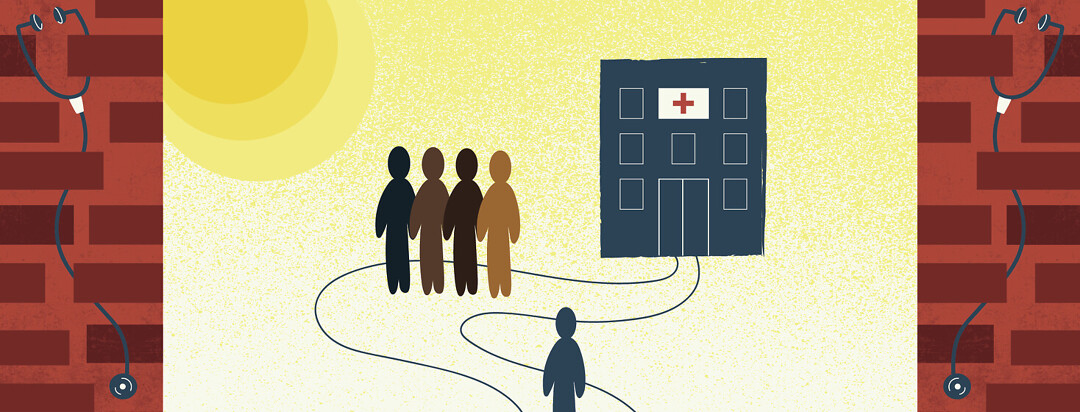When People of Color Have Sleep Apnea
Fifth in the series: Sleep Apnea’s Health Disparities
Does obstructive sleep apnea (OSA) occur at the same rate among people of different racial backgrounds? It may seem like OSA risk would be consistent across populations, but the science says otherwise.
People of color not only develop OSA at different rates than their white neighbors, but they may face greater struggles when seeking diagnosis and treatment.
Race, ethnicity, and OSA: it’s complicated
In the world of medical research, race and ethnicity aren’t generally defined biologically. Rather, they’re identified as socially constructed labels. Race and ethnicity within the context of medicine must be interpreted within a broader cultural context, especially in a racially and ethnically diverse nation like the United States.1
However, race and ethnicity provide targets for bias, discrimination, and exclusion in our communities. Research proves these links lead to very real repercussions to physical health.2
It’s not hard to imagine that someone who experiences ongoing stress from racism will eventually come to experience physical symptoms. The pathway from racism to disease is absolutely real, says Dr. Eliseo J. Pérez-Stable, the Director of the National Institute on Minority Health and Health Disparities.1
This is true for OSA, which has several different root causes.
Obesity, differences in facial and upper airway structures, and even environmental impacts like air pollution all belong to OSA’s spectrum of causes.3-5
Indeed, researchers can link relationships between these 3 causes of OSA to racial or ethnic identity.1

Incidence of OSA among people of color
OSA has been shown in multiple studies to prevail in Black, indigenous, and people of color (BIPOC) communities. It is also found to be more severe among these people at the time of diagnosis.6
The reasons for this trace back to a cultural mistrust of the medical system, obstacles to care (economics, caregiver bias, or access issues), and general life stress chiefly linked to racism.7,8
Let's take a closer look.
African American community
OSA is more than twice as prevalent in African Americans than in their white neighbors.9
African Americans with OSA also experience significantly higher rates of obesity and high blood pressure. Black women develop OSA at a much younger age, and Black men experience more dangerous drops in blood oxygen than their white counterparts.9
Asian American and Pacific Islander communities
Research shows Chinese Americans may be more likely than their white peers to suffer OSA.10
Obesity isn’t necessarily a key factor, as often presumed. Sometimes bone structure can factor into breathing problems during sleep.
One study in 2000 showed that the majority of Far-East Asian men with severe OSA had a normal body mass index measure and that their facial structures contributed to their breathing disruptions.11
Latin American community
Hispanic Americans are more likely than white Americans to have sleep-disordered breathing like OSA.10
The Hispanic Community Health Study/Study of Latinos found the prevalence of OSA in the US Latin American community high, yet significantly underdiagnosed and undertreated.12
High rates of diabetes and high blood pressure in this community may be one result of widespread untreated OSA.12
Indigenous/Native American community
While information about OSA in Native American indigenous populations remains slim, research suggests that people in this community may be likely to develop sleep apnea due to higher obesity rates. Almost one-third of all Native Americans are obese.13

Diagnosis and treatment challenges
Researchers continue to connect the dots between OSA risk and race. Meanwhile, BIPOC continue to live with undiagnosed, undertreated, or untreated OSA.
Unfortunately, the longer they go without addressing their sleep-breathing problems, the more they’re likely to develop 4 of the most common chronic conditions facing non-white US communities:
- Obesity
- Diabetes
- Heart disease
- High blood pressure
Pathway to overcome racial and ethnic disparity for people with OSA
Resolving racial and ethnic discrimination at multiple levels may lead to more and better healthcare interventions, truly improving the lives of BIPOC either living with untreated OSA or courting a higher risk for it.
Research that gathers better and more data through an intersectional approach could bring more inclusive results that can inspire better treatment and prevention options in the future.1
The Centers for Disease Control and Prevention recognizes the serious impact racism has on public health. It joins many organizations, institutions, and agencies in seeking improved access to healthcare for BIPOC, which could include the following:14
- Removing language barriers.
- Providing affordable care.
- Training healthcare workers in cultural sensitivity.
- Rewriting healthcare policy for inclusivity.
- Employing more BIPOC as healthcare professionals.
- Creative a transparent, trustworthy healthcare services environment.
- Eliminating racism.
These are huge, but worthwhile, goals, and not only because BIPOC US citizens in the are entitled to enjoy equity in healthcare services.
In the big picture, their good health and prosperity stand to benefit all Americans by reducing taxpayer burden, improving national security, and bolstering entire economies.15
This article is part of a series: Sleep Apnea’s Health Disparities. Check out the other articles in this series!

Join the conversation